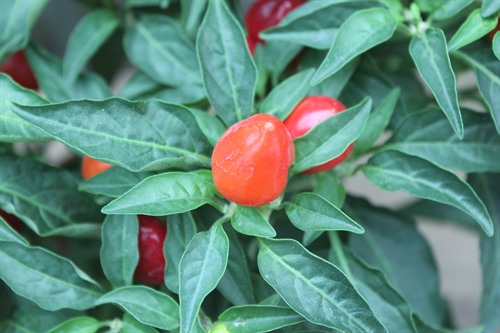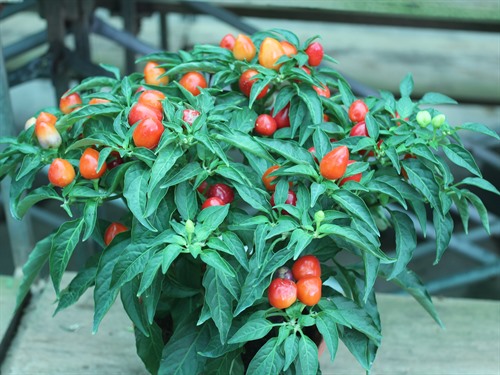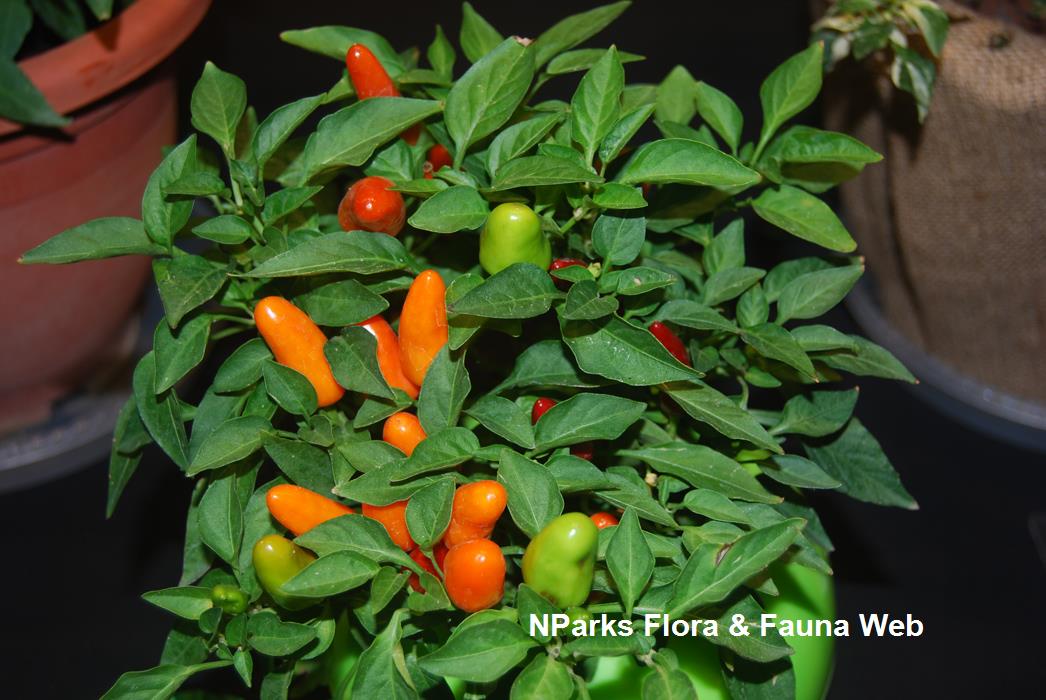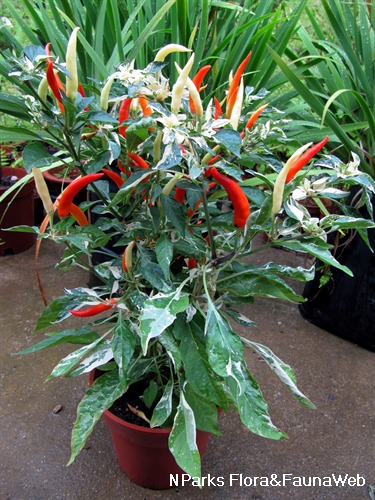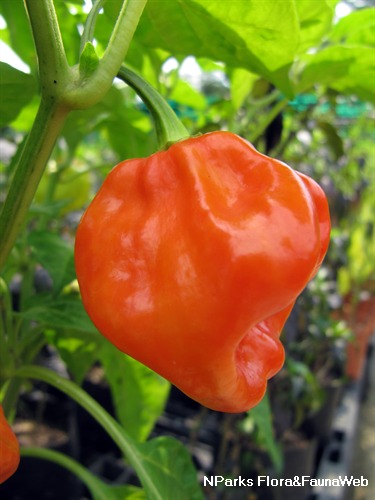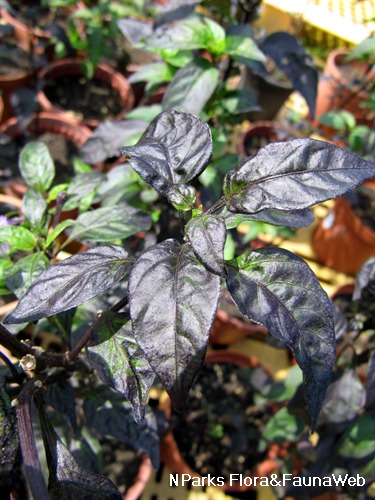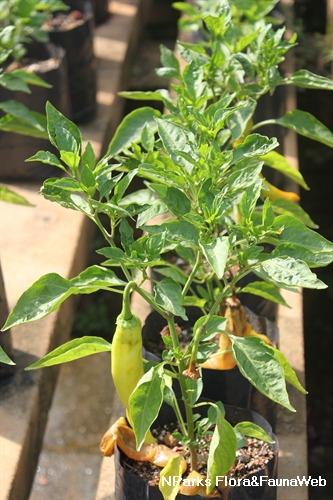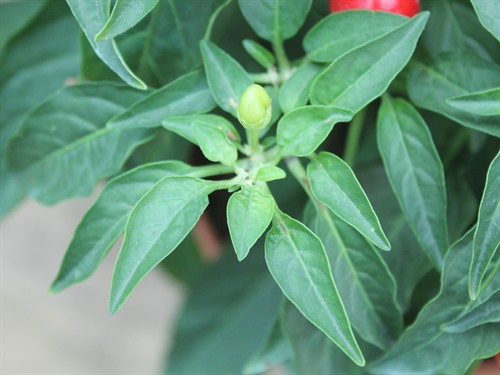
Name
Classifications and Characteristics
| Plant Division | Angiosperms (Flowering Seed Plants) (Dicotyledon) |
|---|---|
| Plant Growth Form | Herbaceous Plant |
| Lifespan (in Singapore) | Perennial |
| Mode of Nutrition | Autotrophic |
| Maximum Height | 0.2 m to 0.8 m |
Biogeography
| Native Distribution | Mexico, South America |
|---|---|
| Native Habitat | Terrestrial |
| Local Conservation Status | Non-native |
Description and Ethnobotany
| Growth Form | Perennial herb up to 0.8m tall. |
|---|---|
| Foliage | The leaves are oblong to egg- or lance-shaped (4-13 cm long, 1.5-4 cm wide) and have a smooth leaf margin. Leaves may occur in alternate or opposite arrangement (1 or 2 leaves per point along the stem, respectively). |
| Stems | The stem is smooth and hairless. |
| Flowers | White, 1 cm-wide flowers have purple anthers (the pollen-bearing tip of the male part). They are typically solitary, but occasional occurring in small clusters. |
| Fruit | The fruit is classified as a berry and contains numerous, light yellow, disk- to kidney-shaped seeds. The chillis grow up to 15 cm long. |
| Cultivation | It takes about 88-125 days from sowing to first harvest. |
| Ethnobotanical Uses | Edible Plant Parts : Edible Fruits, Edible Seeds Food (Herb or Spice): The peppers are rich in Vitamin A and C and are eaten fresh or cooked, lending a spicy taste to a variety of cuisines. Medicinal: Capsaicin is the key compound in peppers which provides the spicy flavor and also has antimicrobial and antifungal properties. Capsaicin-containing creams can be applied topically to relieve pain from sore muscles, skin problems, shingles and rheumatism. |
Landscaping Features
| Landscape Uses | Parks & Gardens, Small Gardens, Container Planting |
|---|---|
| Thematic Landscaping | Economic Garden |
| Usage Hazard - Cons | Irritant - Contact Allergy |
Fauna, Pollination and Dispersal
| Pollination Method(s) | Biotic (Fauna) (Insects (Bee)) |
|---|---|
| Seed or Spore Dispersal | Biotic (Fauna) |
Plant Care and Propagation
| Light Preference | Full Sun |
|---|---|
| Water Preference | Moderate Water |
| Plant Growth Rate | Moderate |
| Rootzone Tolerance | Moist Soils, Well-Drained Soils, Fertile Loamy Soils |
| Maintenance Requirements | Moderate |
| Potential Problems | Chilli is prone to being attacked by aphids, spider mites and whiteflies. To learn more about how to manage these pests and care for Chilli, please click on this NParks' link: NParks' Gardening Resources. |
| Diseases | Chilli is susceptible to cucumber mosaic virus which can be spread through aphid feeding. |
| Pest(s) | Sucking Insects |
| Propagation Method | Seed |
| Seed / Spore Germination Duration | 6 days to 21 days |
Foliar
| Foliage Retention | Evergreen |
|---|---|
| Mature Foliage Colour(s) | Green |
| Mature Foliage Texture(s) | Smooth |
| Prominent Young Flush Colour(s) | Green |
| Young Flush Texture(s) | Smooth |
| Foliar Type | Simple / Unifoliate |
| Foliar Arrangement Along Stem | Alternate |
| Foliar Attachment to Stem | Petiolate |
| Foliar Shape(s) | Non-Palm Foliage (Lanceolate, Elliptical) |
| Foliar Venation | Pinnate / Net |
| Foliar Margin | Entire |
| Foliar Apex - Tip | Acute |
| Foliar Base | Rounded / Obtuse |
| Typical Foliar Area | Microphyll ( 2.25cm2 - 20.25 cm2 ) |
Floral (Angiosperm)
| Flower & Plant Sexuality | Bisexual Flowers |
| Flower Colour(s) | White |
|---|---|
| Flower Grouping | Solitary |
| Flower Location | Axillary |
| Flower Symmetry | Radial |
Fruit, Seed and Spore
| Mature Fruit Colour(s) | Green, Orange, Purple, Red, Yellow / Golden |
|---|---|
| Mature Fruit Texture(s) | Smooth, Waxy |
| Fruit Classification | Simple Fruit |
| Fruit Type | |
| Mature Seed Colour(s) | Cream / Off-White |
| Mature Seed Texture(s) | Smooth |
| Seed Description | Flat, disk-shaped. |
| Seed Quantity Per Fruit | Numerous (>20) |
Image Repository
Others
| Master ID | 29473 |
|---|---|
| Species ID | 6629 |
| Flora Disclaimer | The information in this website has been compiled from reliable sources, such as reference works on medicinal plants. It is not a substitute for medical advice or treatment and NParks does not purport to provide any medical advice. Readers should always consult his/her physician before using or consuming a plant for medicinal purposes. |

